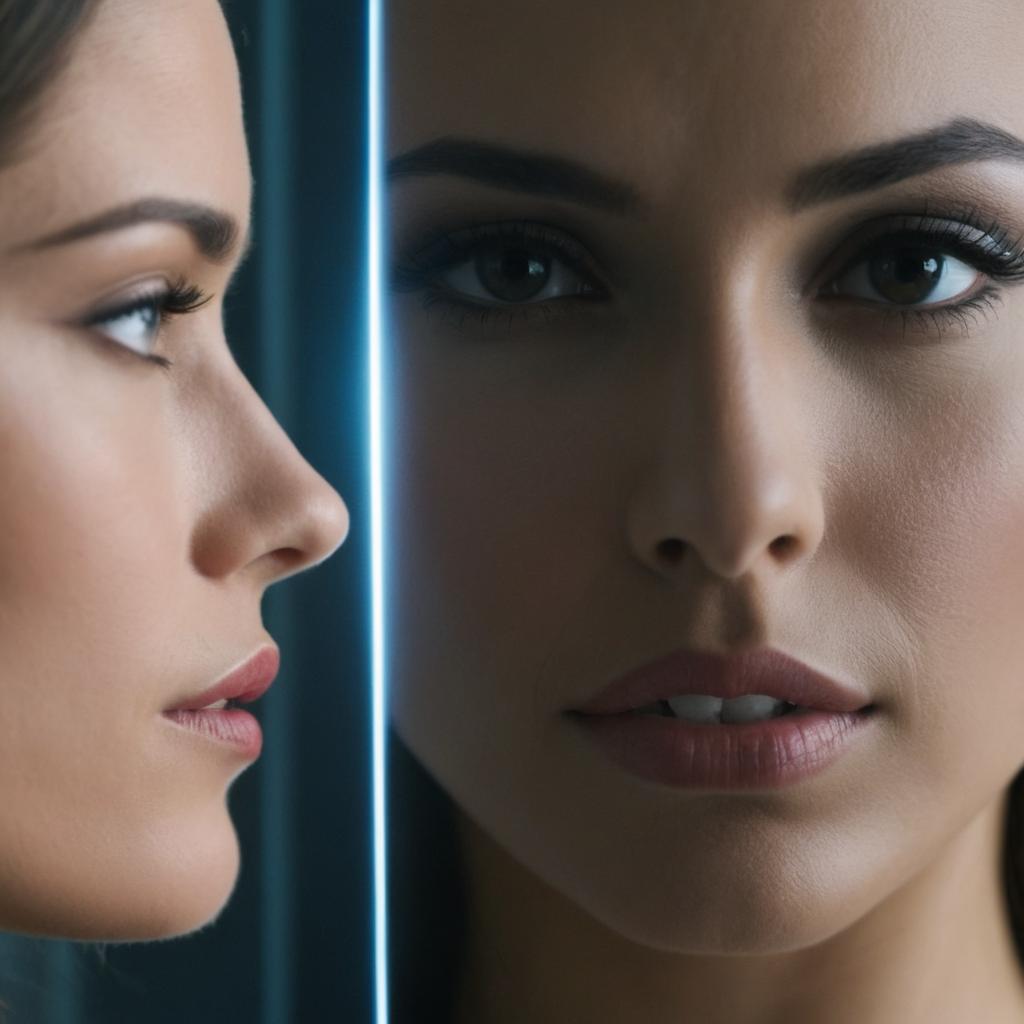
As the use of AI-generated virtual models (digital twins) gains popularity in the fashion and beauty industries, concerns have been raised about the potential impact on individuals’ identities and privacy. While proponents argue that these digital twins can provide new opportunities for models, industry groups are calling for stricter laws to protect performers’ rights.
As someone who’s been following the development of AI technology, I’m excited about its potential applications in various industries, including fashion and beauty.
Almost every week, new possibilities are presented and new boundaries are crossed, such as generating entire video clips using SORA from OpenAI.
After the wave of excitement, however, comes reflection and we begin to notice certain threats posed by new technologies.
I share concerns raised by industry groups about the impact of AI-generated virtual models on individuals’ identities and privacy.
The growing popularity of digital twins has led to fears that scammers could use AI to create convincing virtual models that closely resemble real people, potentially causing reputational damage or even financial harm if brands or advertisers misuse the images.
This is a serious concern because as AI becomes more sophisticated, it may become easier to create convincing virtual models that closely resemble real people. In fact, some experts predict that by 2025, the market for digital twin technology could be worth $13.4 billion, with applications ranging from healthcare and education to fashion and beauty. While this presents exciting opportunities for brands and designers who want to test out different looks and styles without requiring real models to undergo multiple fittings or makeovers, it also raises serious privacy concerns about the potential for identity theft.
Virtual models can help but new legislation is very much needed
Given these risks, it’s essential that we approach the use of AI in the modeling industry with caution and a focus on fair use and representation.
While virtual models can help to reduce waste by allowing for more sustainable fashion practices, we must ensure that individuals’ identities and privacy are protected, and that the benefits of these digital twins are balanced with real-world concerns about representation and diversity.
Ultimately, it will be up to policymakers, industry groups, and individual brands to find a way forward that balances the potential benefits of AI with the need to protect human rights and dignity. As AI technology continues to evolve, we must remain vigilant and continue to push for stricter laws protecting performers’ rights, while also promoting fair and responsible use of this powerful technology in the modeling industry.
The current legal framework is struggling to keep pace with the rapid advancement of AI technology, particularly when it comes to digital twins.
In terms of image rights, it is unclear who owns the rights to a person’s digital twin and who has the authority to use or profit from it.
This raises significant questions about consent, exploitation, and the commercialization of personal data. Furthermore, there is a lack of clarity regarding potential liability for damages or fraud associated with digital twins. If a digital twin causes harm or is used for malicious purposes, it is unclear who would be held responsible – the creator of the digital twin, the person it represents, or the digital twin itself.
Additionally, there are no clear guidelines for how earnings should be distributed when a digital twin is used to generate revenue, such as through the use of a person’s likeness or voice. These legal grey areas highlight the urgent need for updated regulations and guidelines to address the unique challenges posed by digital twins and other advanced AI technologies.

Possible negative outcomes from digital twins
One major concern is the possibility of scams or identity theft. As AI becomes more sophisticated, it may become easier to create convincing virtual models that closely resemble real people. This could lead to situations where individuals’ likenesses are used without their consent, potentially causing reputational damage or even financial harm if brands or advertisers misuse the images.
Additionally, some critics argue that the rise of AI-generated models could exacerbate existing issues with representation and diversity in the fashion industry. By creating virtual models that conform to traditional beauty standards, brands may be perpetuating unrealistic expectations and excluding individuals who do not fit these ideals. This could further contribute to the prevalence of body shaming and self-esteem issues among young people.
On the other hand, proponents argue that the use of AI should be encouraged in a fair and ethical way, with both real models and virtual versions working together. By creating digital twins, designers and brands can test out different looks and styles without requiring real models to undergo multiple fittings or makeovers. This could also help to reduce waste by allowing for more sustainable fashion practices.
Ultimately, it’s important that we approach the use of AI in the modeling industry with caution and a focus on fair use and representation. As AI technology continues to evolve, we must ensure that individuals’ identities and privacy are protected, and that the benefits of these virtual models are balanced with real-world concerns about representation and diversity. It will be up to policymakers, industry groups, and individual brands to find a way forward that balances the potential benefits of AI with the need to protect human rights and dignity.
Summary
In conclusion, there are numerous risks associated with digital twins, and it is crucial for society to engage in meaningful discussions about how to address these challenges. In addition to protecting privacy and image rights for individuals whose personalities are used to create digital twins, it is also important to ensure fair compensation for those individuals.
This will require ongoing dialogue and collaboration between policymakers, industry leaders, and the public. As the technology continues to evolve, we will continue to monitor the situation and revisit this topic on our blog to provide updates and insights. It is our hope that by working together, we can create a framework that allows for the safe and ethical use of digital twins while protecting the rights and interests of all parties involved.
What do you think? Are you excited about the potential of AI in the modeling industry or do you share concerns about identity theft and representation?
Let’s continue the conversation below!







I couldn’t agree more with the author’s sentiments on the risks and rewards of digital twins. As someone who has been following the development of AI technology, I’m excited about its potential applications in various industries, including fashion and beauty. However, as we’ve seen recently with the CIA thwarting a plot to kill “a huge number” at a Swift concert using AI-generated virtual models, it’s essential that we approach this technology with caution and a focus on fair use and representation.
In light of today’s events, I believe it’s more crucial than ever that policymakers, industry groups, and individual brands work together to find a way forward that balances the potential benefits of AI with the need to protect human rights and dignity. This includes protecting individuals’ identities and privacy, ensuring fair compensation for those whose personalities are used to create digital twins, and promoting responsible use of this powerful technology.
From my own professional experience working in the field of cybersecurity, I would advise brands and designers to be mindful of the potential risks associated with digital twins, such as identity theft and scams. It’s essential that they take steps to protect their customers’ data and ensure that any virtual models used are created with their consent.
In terms of image rights, it’s crucial that we establish clear guidelines for who owns the rights to a person’s digital twin and who has the authority to use or profit from it. This will help prevent exploitation and ensure that individuals are fairly compensated for their likenesses.
Ultimately, I agree with the author that it’s essential for society to engage in meaningful discussions about how to address the challenges posed by digital twins. By working together and finding a way forward that balances the potential benefits of AI with the need to protect human rights and dignity, we can create a framework that allows for the safe and ethical use of digital twins while protecting the rights and interests of all parties involved.